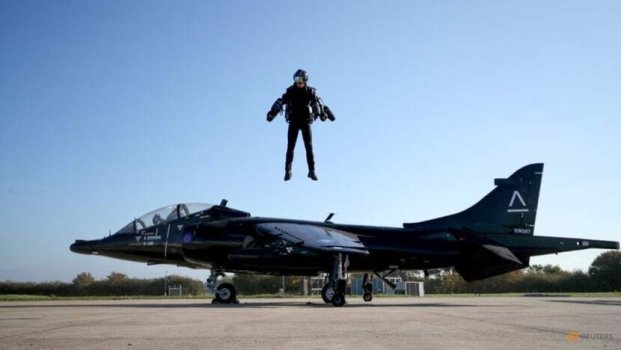K
Kathleen Martin
Guest
SYDNEY : Paramedics with jetpacks, border police in flying cars and city workers commuting by drone all sound like science fiction - but the concepts are part of a advanced air mobility (AAM) market that is expected to be worth as much as US$17 billion by 2025.
As urbanisation leaves city streets congested and advances in technology allow for vehicles considered impossible just decades ago, using the sky for small-scale aircraft has become increasingly attractive.
"We can't continue to use road transport; 3D mobility is really important," Anna Kominik, Asia Pacific Director at Wisk, said in an interview broadcast on Thursday at the Reuters Next conference.
Wisk, a unit of Boeing Co., has been testing Cora, an autonomous electric aircraft that takes off and lands like a helicopter, at its base in Tekapo, New Zealand, for four years.
Wisk is liaising with regulators, including the U.S. Federal Aviation Administration, to get approval for public use of the air taxi, which can carry two passengers up to 100 kilometres (62 miles) at speeds of up to 150 km/h (93 mph).
"Sixty-seven percent of the world's population will be cities by 2030 ,so that ground infrastructure can't keep up and is costly to overhaul," Kominik said in a panel discussion recorded on Nov. 5. "We have to move to the sky as a resource."
Netherlands-based PAL-V is keeping one foot on the ground while taking to the air. Its two-seat gyroplane road vehicle Liberty, which has a maximum speed of 180 km/h and a flying range of 400 km, received approval for use on European roads this year.
Continue reading: https://www.channelnewsasia.com/business/jetpacks-flying-cars-and-taxi-drones-transports-future-skies-2356031
As urbanisation leaves city streets congested and advances in technology allow for vehicles considered impossible just decades ago, using the sky for small-scale aircraft has become increasingly attractive.
"We can't continue to use road transport; 3D mobility is really important," Anna Kominik, Asia Pacific Director at Wisk, said in an interview broadcast on Thursday at the Reuters Next conference.
Wisk, a unit of Boeing Co., has been testing Cora, an autonomous electric aircraft that takes off and lands like a helicopter, at its base in Tekapo, New Zealand, for four years.
Wisk is liaising with regulators, including the U.S. Federal Aviation Administration, to get approval for public use of the air taxi, which can carry two passengers up to 100 kilometres (62 miles) at speeds of up to 150 km/h (93 mph).
"Sixty-seven percent of the world's population will be cities by 2030 ,so that ground infrastructure can't keep up and is costly to overhaul," Kominik said in a panel discussion recorded on Nov. 5. "We have to move to the sky as a resource."
Netherlands-based PAL-V is keeping one foot on the ground while taking to the air. Its two-seat gyroplane road vehicle Liberty, which has a maximum speed of 180 km/h and a flying range of 400 km, received approval for use on European roads this year.
Continue reading: https://www.channelnewsasia.com/business/jetpacks-flying-cars-and-taxi-drones-transports-future-skies-2356031

